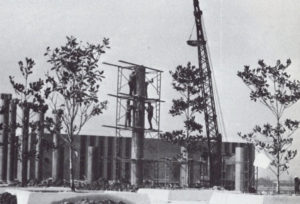The Ten Pillars 2030
A Christian University and Its Worldview
In the late summer of 1900, there was a man who lived in a thriving city on the Texas shore. People came from far across the ocean to visit this growing city, as it was a rising center for commerce, innovation, and trade.
One day, with no warning—for those were the days before forecasts and radar—the winds became a wild thing, and the sea began to rise. A great storm was coming, and the people were not prepared.
The man and many of his fellow citizens took shelter at the courthouse where his father was a judge, behind the thick granite columns that held up the house of law, and prayed for the best. The rain fell, the flood waters rose, and the wind blew and slammed against the building. But the pillars held.

The thriving coastal city was Galveston; the man was the father of HCU’s founder Stewart Morris; the storm, the Great Galveston hurricane, was the deadliest natural disaster in the history of the United States and was later named “The Storm of the Century.”
Houston Baptist College was founded in 1960, and today you can see ten of those same granite columns at the center of the HCU campus, a gift from the survivor’s son. Given in the fall of 1969 at the height of the Cold War and cultural upheaval in the United States, they are more than merely relics of the past. They are a constant reminder that our ability to weather fierce storms depends upon solid foundations.[i]
The Core Convictions of HCU
- Pillar I: God, the Creator of a Good and Knowable World
- Pillar II: A Plan of Restoration
- Pillar III: The Importance of Human Agency
- Pillar IV: A Renewed People
- Pillar V: A Mandate to Understand the World
- Pillar VI: Learning and Teaching as Discipleship
- Pillar VII: Life, Humanness, Gender and Marriage
- Pillar VIII: Governmental Institutions
- Pillar IX: The Christian University
- Pillar X: The Mystery of Unity in Christ
Epilogue
Start Reading: Universities in the Midst of the Whirlwind »